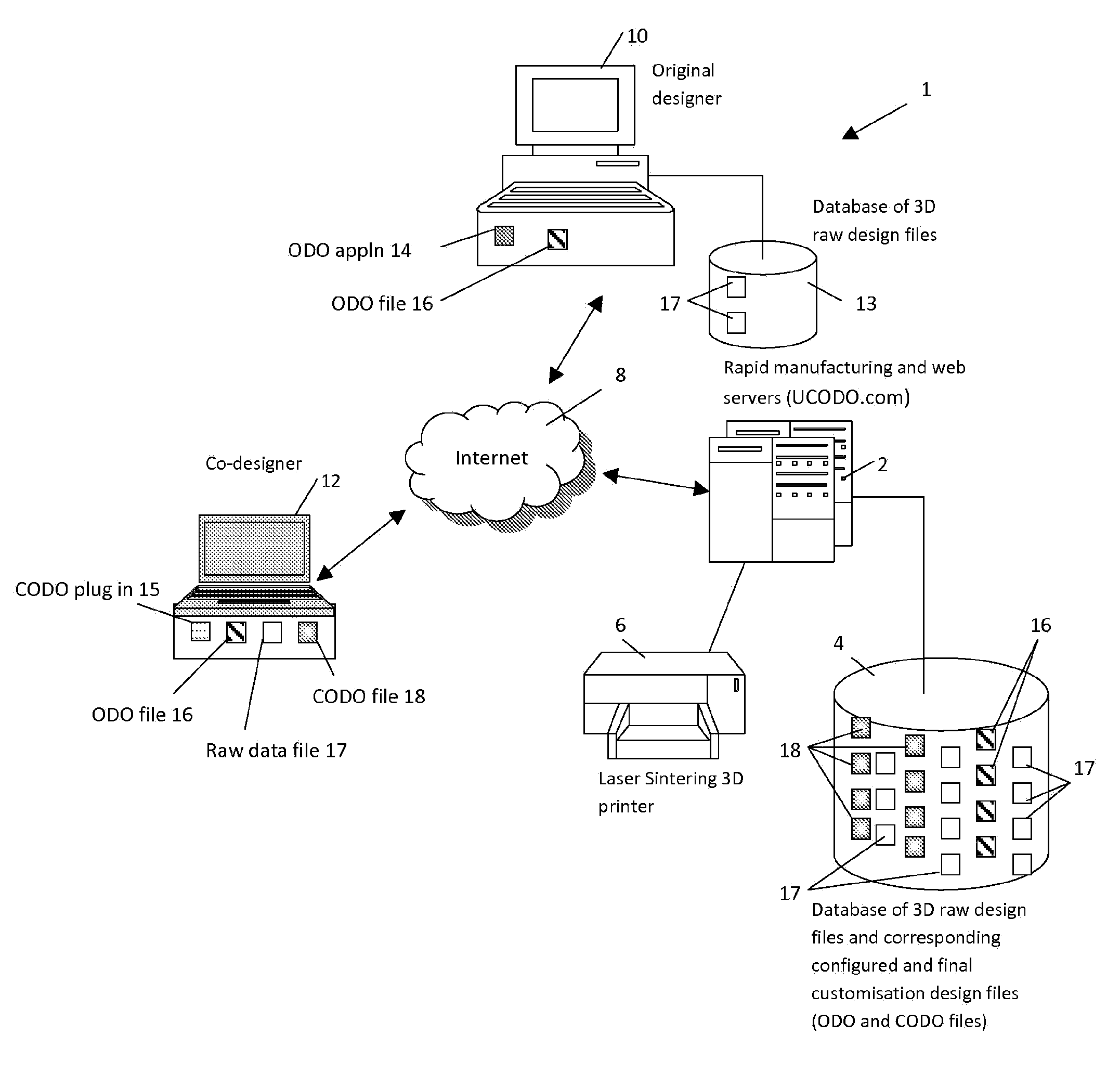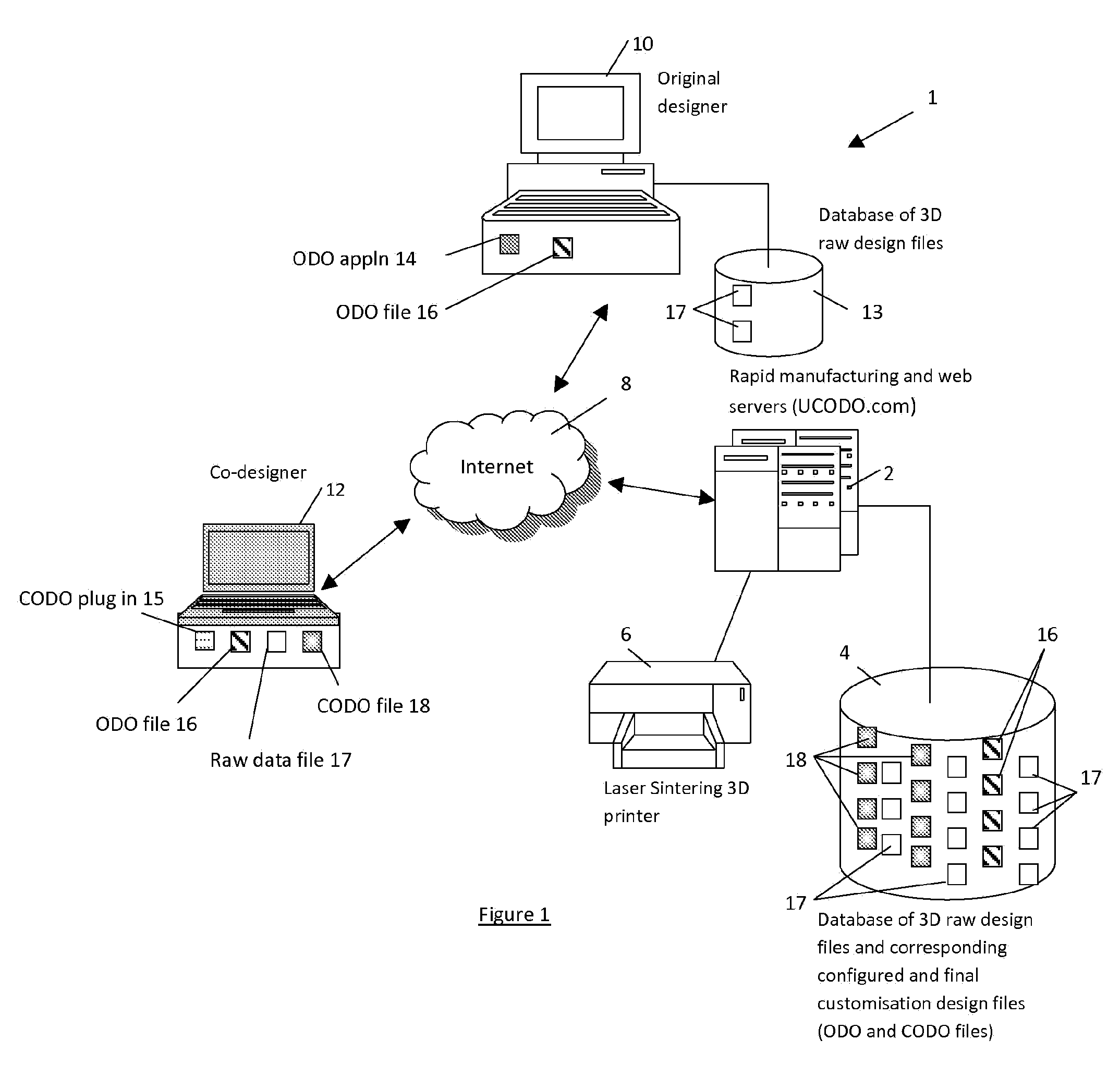User interfaces for designing objects
a user interface and object technology, applied in static indicating devices, instruments, cad techniques, etc., can solve the problems of reducing the degree of control of one designer on the design, increasing the cost of computing hardware required for faster image rendering, and affecting so as to preserve any distinctive design features, preserve the aesthetics of objects, and increase the freedom of choi
- Summary
- Abstract
- Description
- Claims
- Application Information
AI Technical Summary
Benefits of technology
Problems solved by technology
Method used
Image
Examples
Embodiment Construction
[0076]The present embodiment is made possible by the existence of rapid manufacturing and laser sintering technologies. There are essentially two stages to the process, the first being creation of a 3D design of the desired object and the second is the use of the design in manufacturing the object and providing that to the customer. The first stage involves creation by an original designer of a constrained design from a raw design data and thereafter the creation of a finalised design by a co-designer. This second stage is a printing process of the finalised design using layer-based manufacturing, using types of plastics, metals or composite metals in powder form. All manufacturing systems of this type comprise a combination of a computer CAD system with a laser sintering machine (or 3D printer) to perform the fabrication of a layer under computer control.
[0077]An embodiment of the present invention is implemented as a rapid manufacturing system providing a web-based service. Referr...
PUM
 Login to View More
Login to View More Abstract
Description
Claims
Application Information
 Login to View More
Login to View More - R&D
- Intellectual Property
- Life Sciences
- Materials
- Tech Scout
- Unparalleled Data Quality
- Higher Quality Content
- 60% Fewer Hallucinations
Browse by: Latest US Patents, China's latest patents, Technical Efficacy Thesaurus, Application Domain, Technology Topic, Popular Technical Reports.
© 2025 PatSnap. All rights reserved.Legal|Privacy policy|Modern Slavery Act Transparency Statement|Sitemap|About US| Contact US: help@patsnap.com



